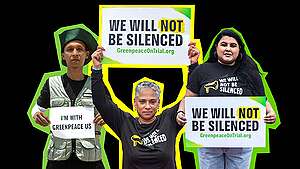Here’s a few rather alarming figures for you. We are now less than 70 days from the crucial Copenhagen Climate Summit, where world leaders are due to meet and forge the successor treaty to the Kyoto Protocol. Between now and then we have only 3 weeks of official negotiations remaining, most of which will take place in Bangkok this week and next.
If you measured the effect of current climate change policies around the world on global warming and its associated impacts – as climate researchers for the United Nations Environment Programme just have – the most optimistic global warming response would be for temperatures to rise to 6.3ºF (about 3.5ºC) above pre-industrial levels by the end of the century. This is a long way off from where we need to be. The graph below appears in the UNEP’s recently published Climate Change Science Compendium. It was first produced in 2001 and has been updated to reflect climate change science that has emerged since then. For reasons that are probably obvious, it is known as the “burning embers” diagram, and intends to communicate clearly and simply the level of risk we’re taking on with different temperature increases.
Current policy has us placed well and truly in the danger zone, leaving us standing flat-footed on burning embers.
The Association of Small Island States (AOSIS) – you know, those countries who are already feeling the impact of sea level rise and whom if you tried to engage in conversation about the subtleties of economic modelling on emissions trading would probably ask how wiping out a nation, community and culture fits into that model and how it’s quantified. They are calling for total warming to be limited to 1.5ºC above pre-industrial levels. That’s a big call, because given that we’ve already heated the planet by about 0.8ºC and there is another 0.6ºC locked into the system even if we stop emitting entirely tomorrow, we’re already pushing that limit. But this is about the survival of communities, countries, cultures and it’s damn well worth fighting for.
Another paper, published in Nature last week and the product of 29 climate scientists makes it clear that humanity has already exceeded what is a safe level of carbon dioxide concentrations in the atmosphere. Pre-industrial levels of CO2 were about 280 parts per million and the authors of this paper put the safe operating boundary of CO2 concentrations at 350 parts per million. Where are we right now? 387 ppm and rising.
In short, not only are we already standing in dangerous territory when it comes to climate change, current policy is actually leading us further away from where we need to be. We need to set targets that go further than just preventing greenhouse gas levels from passing a safe threshold – we’ve already done that. Levels of greenhouse gases have to reach zero as soon as possible and the planet given time and help to bring levels back down to within levels that could be considered safe.
There is an enormous gulf to bridge in the climate negotiations, but only a deal that aims to reduce greenhouse gas emissions as soon as possible can be the acceptable outcome at Copenhagen, given the risks we’re knowingly taking with our own survival.


